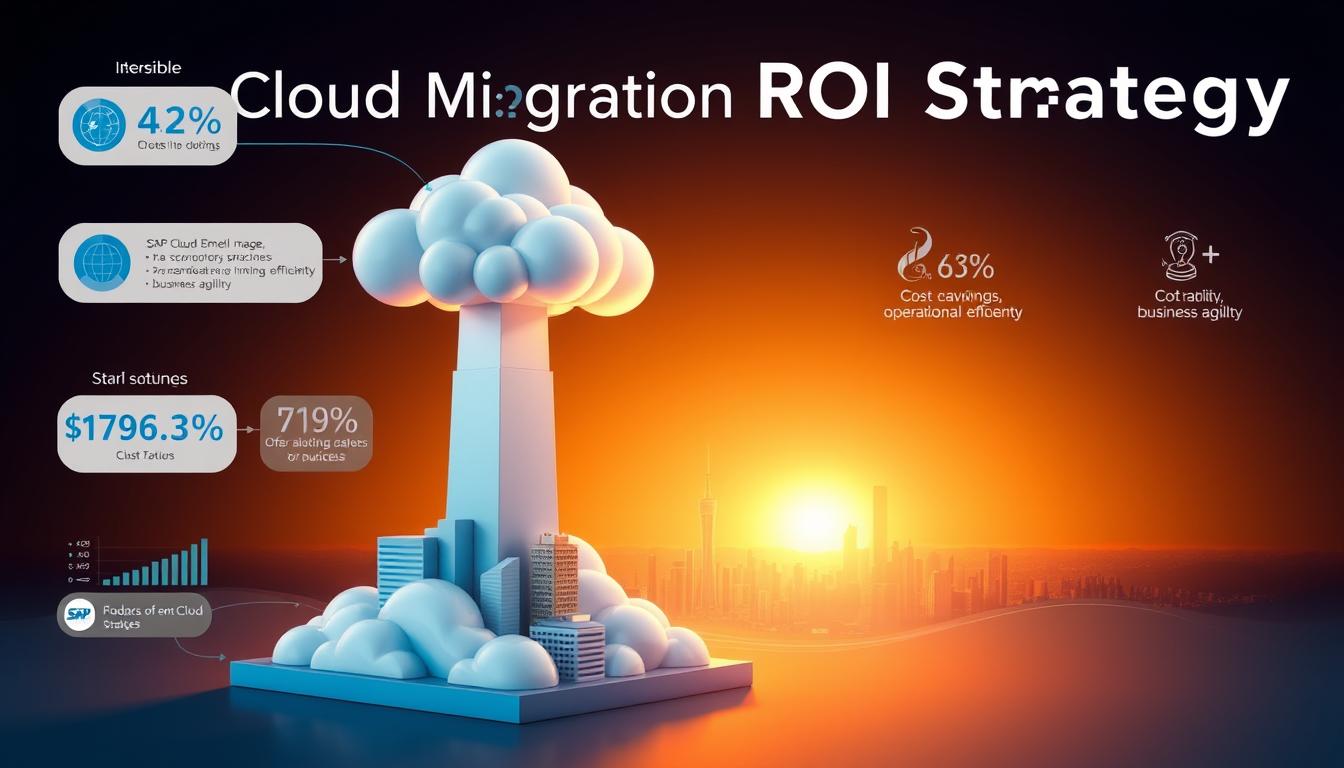In the dynamic landscape of digital transformation, Indian enterprises are increasingly exploring SAP cloud migration strategies to enhance operational efficiency and technological capabilities. Understanding the true SAP cloud migration ROI requires a nuanced approach that goes beyond surface-level financial calculations.
The journey towards cloud adoption involves complex decision-making processes that demand rigorous analysis of potential SAP migration benefits. Businesses must navigate through numerous challenges, evaluating both tangible and intangible returns on their technological investments.
Organisations seeking to optimise their technological infrastructure need comprehensive insights into the real economic implications of cloud migration. This exploration will demystify prevalent misconceptions and provide strategic guidance for Indian businesses contemplating SAP cloud transformation.
Key Takeaways
- Comprehensive ROI assessment is crucial for successful cloud migration
- SAP cloud migration offers strategic technological advantages
- Financial calculations must consider long-term business value
- Risk mitigation plays a significant role in migration strategies
- Technological scalability impacts overall investment returns
Understanding SAP Cloud Migration ROI: Breaking Down the Basics
Navigating the complex landscape of SAP cloud migration requires a strategic approach to understanding return on investment (ROI). Businesses across India are increasingly exploring cloud migration strategies to streamline their technological infrastructure and reduce operational costs.

A comprehensive SAP migration analysis begins with a detailed evaluation of current technological investments and potential future gains. The SAP ROI calculator becomes a crucial tool in this process, helping organisations assess the financial implications of their cloud transformation journey.
Key Components of Migration Cost Assessment
Identifying the critical elements of migration costs involves a multi-layered approach. Organisations must consider software licensing, infrastructure upgrades, staff training, and potential productivity impacts. The total cost of ownership extends beyond immediate financial outlays, encompassing long-term strategic benefits and operational efficiencies.
Traditional vs Cloud Infrastructure Expenses
Cloud infrastructure presents a significant departure from traditional on-premises systems. While initial migration costs may seem substantial, the long-term savings can be substantial. Reduced hardware maintenance, scalable resources, and improved flexibility offer compelling financial advantages for businesses seeking technological modernisation.
Timeline Considerations for ROI Calculation
ROI calculations are not instantaneous. Businesses must evaluate the migration timeline, factoring in implementation phases, staff adaptation, and performance stabilisation. Typically, organisations can expect to see tangible returns within 12-24 months, depending on the complexity of their SAP environment and migration strategy.
Common Myths About SAP Cloud Migration Costs

Many Indian businesses harbour misconceptions about SAP cloud migration ROI that can significantly impact their strategic decisions. Understanding these myths is crucial for maximising ROI in SAP migration and making informed technological investments.
One prevalent myth suggests cloud migration always delivers instant cost savings. In reality, SAP cloud migration ROI is a nuanced process requiring strategic planning and careful implementation. Organisations must evaluate long-term financial implications rather than expecting immediate financial transformations.
Small and medium enterprises often believe cloud migration is financially prohibitive. This misconception prevents them from exploring potential technological advancements. Modern cloud solutions offer scalable options tailored to different business sizes, enabling more accessible migration strategies.
Another widespread misunderstanding involves perceiving cloud migration expenses as purely upfront costs. Cloud infrastructure actually distributes expenses across implementation, maintenance, and optimisation phases. Businesses can leverage flexible payment models that align with their specific technological requirements and budget constraints.
By critically examining these myths, Indian organisations can develop more realistic expectations about SAP cloud migration, ultimately creating more effective digital transformation strategies that genuinely enhance operational efficiency and business performance.
Measuring Real Business Value and Performance Metrics
Measuring SAP cloud migration ROI requires a comprehensive approach that goes beyond simple cost calculations. Indian enterprises are discovering that cloud migration success involves understanding both tangible and intangible benefits that transform business operations.
Organisations implementing SAP cloud migration can unlock significant strategic advantages. The transition enables businesses to leverage advanced technological capabilities while optimising operational efficiency.
Quantifiable Performance Indicators
Key performance metrics for cloud migration success include system responsiveness, reduced infrastructure maintenance costs, and enhanced scalability. Businesses can measure improvements through decreased downtime, faster processing speeds, and more efficient resource allocation.
Hidden Value Drivers
Beyond immediate financial gains, cloud migration offers strategic benefits like improved collaboration tools, access to cutting-edge technologies, and enhanced flexibility. These hidden value drivers can significantly impact organisational productivity and innovation potential.
Risk Mitigation and Compliance Benefits
Cloud migration provides robust data security frameworks and sophisticated disaster recovery mechanisms. Enterprises gain enhanced regulatory compliance capabilities, reducing potential legal and operational risks while ensuring data protection meets international standards.
Measuring SAP cloud migration ROI is not just about cost savings but about transforming business capabilities and creating sustainable competitive advantages.
Conclusion
The journey of SAP cloud migration represents a critical strategic decision for Indian enterprises seeking digital transformation. Understanding SAP migration benefits requires a holistic approach that extends beyond simplistic cost calculations. Organisations must recognise that SAP cloud migration ROI encompasses more than immediate financial metrics.
Strategic evaluation involves examining comprehensive performance indicators, risk mitigation potential, and long-term technological advantages. While initial implementation costs are significant, the transformative capabilities of cloud infrastructure can drive substantial operational efficiencies. Indian businesses must view cloud migration as an investment in technological resilience and competitive capabilities.
Successful cloud migration demands meticulous planning, realistic expectations, and a nuanced understanding of organisational technology ecosystems. By debunking prevalent myths and focusing on measurable business outcomes, enterprises can unlock substantial value. The SAP migration benefits emerge not just from cost savings, but from enhanced agility, scalability, and innovation potential.
Ultimately, enterprises must approach SAP cloud migration ROI with a forward-looking perspective. Embracing cloud technologies is no longer optional but essential for maintaining technological competitiveness in India’s rapidly evolving digital landscape. Informed decision-making, grounded in robust analysis and strategic vision, will differentiate successful digital transformation initiatives.

